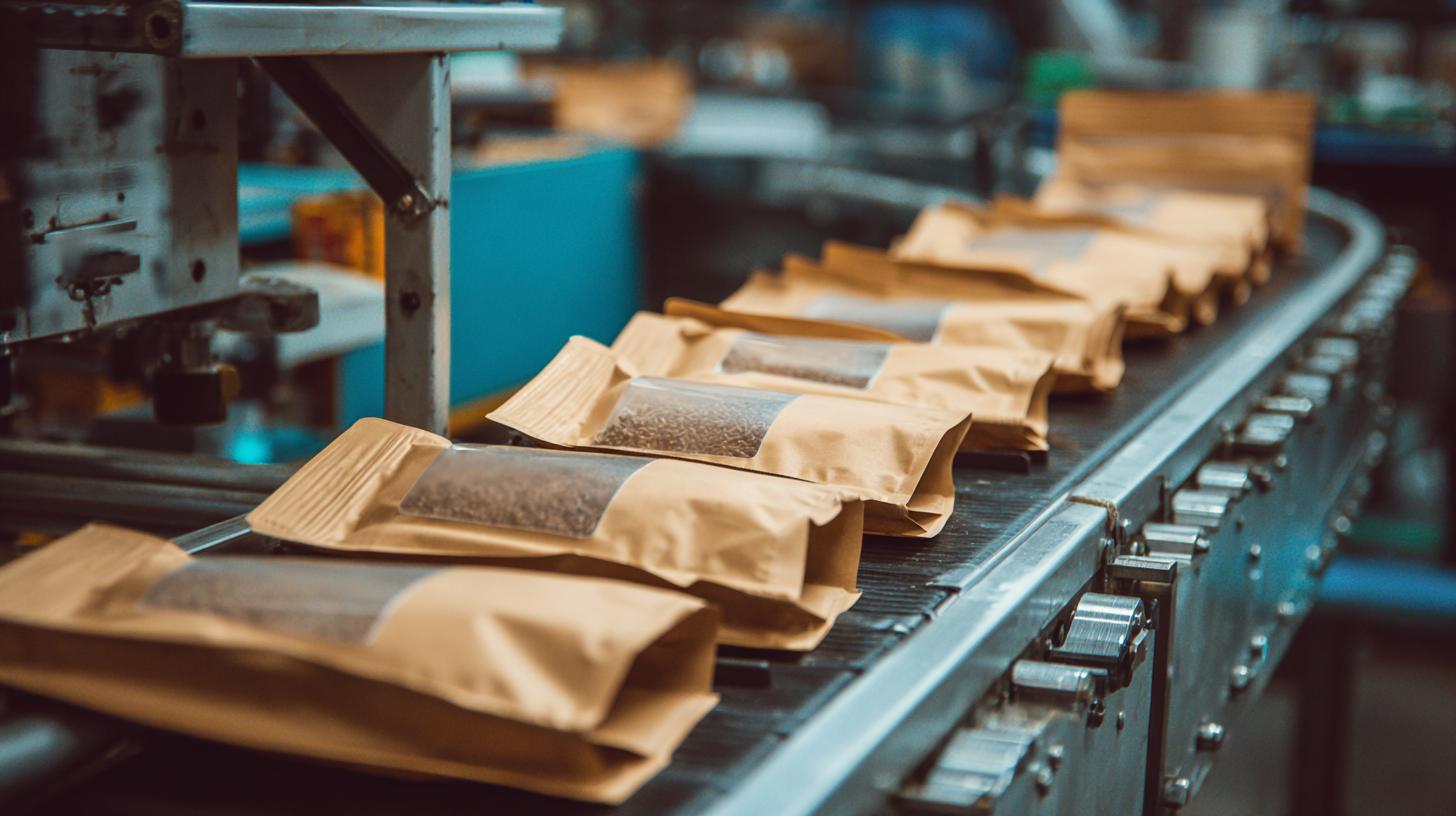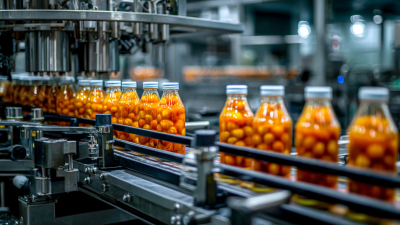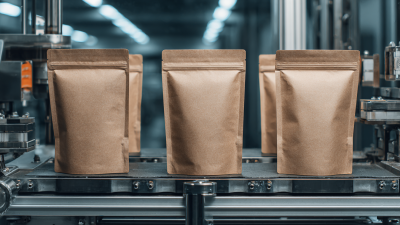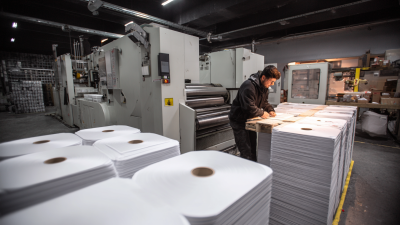The Ultimate Guide to Eco Friendly Plastic Pouches for Sustainable Packaging Solutions
As the world grapples with the pressing challenges of environmental sustainability, the packaging industry is witnessing a transformative shift towards eco-friendly solutions. Among these innovations, plastic pouches have emerged as a versatile and sustainable alternative to traditional packaging options.

This guide delves into the myriad benefits of eco-friendly plastic pouches, highlighting their role in reducing waste and promoting responsible consumption. By harnessing advanced materials and innovative designs, these pouches offer not only a lightweight and space-efficient solution but also the potential to minimize the environmental footprint associated with conventional packaging.
As businesses and consumers alike increasingly prioritize sustainability, understanding the various types of eco-friendly plastic pouches and their applications is essential in making informed choices that support a greener future. Join us as we explore why plastic pouches exemplify a powerful step towards achieving sustainable packaging solutions.
Understanding Eco-Friendly Plastics: Types and Benefits
Eco-friendly plastics are gaining traction as a sustainable alternative in packaging solutions, and understanding their types and benefits is crucial for businesses looking to minimize their environmental impact. According to a report by MarketsandMarkets, the global bioplastics market is projected to reach $27.6 billion by 2024, driven by increasing consumer preference for sustainable products and stricter environmental regulations. This growth highlights the shift towards materials like polylactic acid (PLA) and polyhydroxyalkanoates (PHA), which are derived from renewable resources and can degrade more easily than traditional plastics.
The benefits of using eco-friendly plastics are manifold. For one, they significantly reduce carbon footprints compared to conventional polyethylene and polypropylene. The Bioplastics Market Report indicates that using bioplastics can cut greenhouse gas emissions by up to 68% during production. Additionally, many eco-friendly plastics are designed to be compostable or recyclable, encouraging circular economy practices within the packaging industry. As consumer awareness and demand for sustainability rise, understanding these eco-friendly options will be key for companies looking to innovate in their packaging strategies while contributing to environmental preservation.
The Impact of Conventional Packaging on the Environment
Conventional packaging has a significant negative impact on the environment, contributing to pollution and the depletion of natural resources. According to a report by the World Economic Forum, approximately 8 million tons of plastic waste enter the oceans each year, harming marine life and ecosystems. Traditional plastic packaging, often made from petroleum-based materials, is not biodegradable and can take hundreds of years to decompose, resulting in long-lasting environmental damage. Moreover, the production of conventional plastics is energy-intensive, generating greenhouse gas emissions that exacerbate climate change.
As consumers increasingly seek sustainable alternatives, the focus on eco-friendly packaging solutions, such as biodegradable pouches made from renewable materials, is growing. A study by Smithers Pira indicates that the global market for sustainable packaging is expected to reach $500 billion by 2027, with a significant demand for flexible packaging options. By shifting towards eco-friendly plastic pouches, businesses can reduce their carbon footprint and meet the rising expectations of environmentally-conscious consumers. Transitioning to sustainable packaging not only benefits the environment but also enhances brand reputation and fosters consumer loyalty in an increasingly competitive market.
The Ultimate Guide to Eco Friendly Plastic Pouches for Sustainable Packaging Solutions
| Pouch Type | Material Used | Biodegradability | Recyclability | Applications | Environmental Impact |
|---|---|---|---|---|---|
| Stand Up Pouches | PLA (Polylactic Acid) | Compostable within 90-180 days | Yes | Snacks, Coffee, Pet Food | Reduces plastic waste; made from renewable resources |
| Flat Pouches | Recycled PET | Not biodegradable, but recyclable | Yes | Food, Cosmetics | Uses less energy than virgin material production |
| Retort Pouches | Bio-Based Nylon | Partially biodegradable | Yes, if collected properly | Ready Meals, Soups | Lightweight; minimizes transport emissions |
| Zipper Pouches | Biodegradable PE | Biodegradable within 12-24 months | Yes | Snacks, Grains | Less plastic usage; friendly to wildlife |
Innovative Features of Sustainable Plastic Pouches
Sustainable plastic pouches have gained traction in various industries as an eco-friendly alternative to traditional packaging. Recent studies indicate that the global sustainable packaging market is projected to reach $500 billion by 2028, with plastic pouches accounting for a significant share due to their lightweight, versatility, and reduced carbon footprint. One of the most innovative features of sustainable plastic pouches is their ability to be manufactured from biodegradable materials. This has enhanced their appeal, as products like plant-based polyethylene can decompose within a year under industrial composting conditions, compared to conventional plastics that may take centuries to break down.
Moreover, advancements in technology have enabled the development of pouches with features such as resealable closures and barrier properties that extend shelf life without the need for excess packaging. Consumer preferences are shifting towards brands that prioritize sustainability; a report by MarketsandMarkets reveals that 74% of consumers are willing to pay more for products packaged in sustainable materials. These trends underscore the growing importance of incorporating innovative features into sustainable plastic pouches, helping brands meet both ecological goals and consumer expectations effectively.

Choosing the Right Eco-Friendly Packaging for Your Brand
When choosing the right eco-friendly packaging for your brand, it’s essential to consider various factors that align with your sustainability goals. Flexible packaging, such as pouches and sachets, has gained popularity due to its ability to minimize material use and reduce waste. This type of packaging not only protects the product effectively but also offers a modern aesthetic that can attract eco-conscious consumers.
**Tips for Choosing Eco-Friendly Packaging:**
1. **Material Selection:** Opt for materials that are recyclable or made from renewable resources. For instance, mono-materials are becoming increasingly popular as they simplify the recycling process and reduce environmental impact.
2. **Supplier Partnership:** Collaborating with suppliers who prioritize sustainability can enhance your brand's eco-friendly image. It is important to assess their practices to ensure they align with your values. Finding a reliable supplier who shares your commitment can streamline your packaging solutions effectively.
3. **Consumer Engagement:** Sustainable packaging can be a powerful marketing tool. Educating your customers about the eco-friendly features of your packaging can create a connection and foster brand loyalty. Consistency in messaging about sustainability will resonate well with your audience.
Future Trends in Eco-Friendly Plastic Solutions and Manufacturing
The future of eco-friendly plastic solutions in sustainable packaging is taking a promising turn, driven by an increasing demand for biodegradable materials. The mycelium packaging market, valued at $84.9 million in 2024, is projected to grow at a robust CAGR of over 9.4% from 2025 to 2034, underscoring the growing consumer preference for sustainable alternatives. This trend is prompting manufacturers to innovate their packaging processes and materials, focusing on natural options that minimize environmental impact.

Another notable trend is the rise of polylactic acid (PLA) as a key player in biodegradable packaging solutions. The global PLA market is anticipated to expand from $124.86 million in 2024 to $4.22 billion by 2032, achieving an impressive CAGR of 16.3%. This growth can be attributed to stringent environmental regulations and a collective consumer shift towards sustainable practices. Additionally, the sustainable packaging equipment market is set to reach an estimated value of $157.6 billion in 2024, projected to grow at a CAGR of 7.3% through 2034, as companies increasingly adopt eco-friendly technologies to meet market demands and adhere to regulatory requirements.
Related Posts
-

Unmatched Quality of Chinese-Made Best Plastic Pouches for Global Excellence
-

Innovative Industry Applications of Best Food Packaging Equipment Driving Global Market Growth
-

Innovative Alternatives for Best Pouch Packaging in 2025 Technology Evolution
-

How to Optimize Your Printing and Packaging Process for Maximum Efficiency
-

Personalized Packaging Bags Shine at the 137th Canton Fair with Record International Buyers
-

Unleashing China's Manufacturing Excellence Through Best Personalized Packaging Bags
